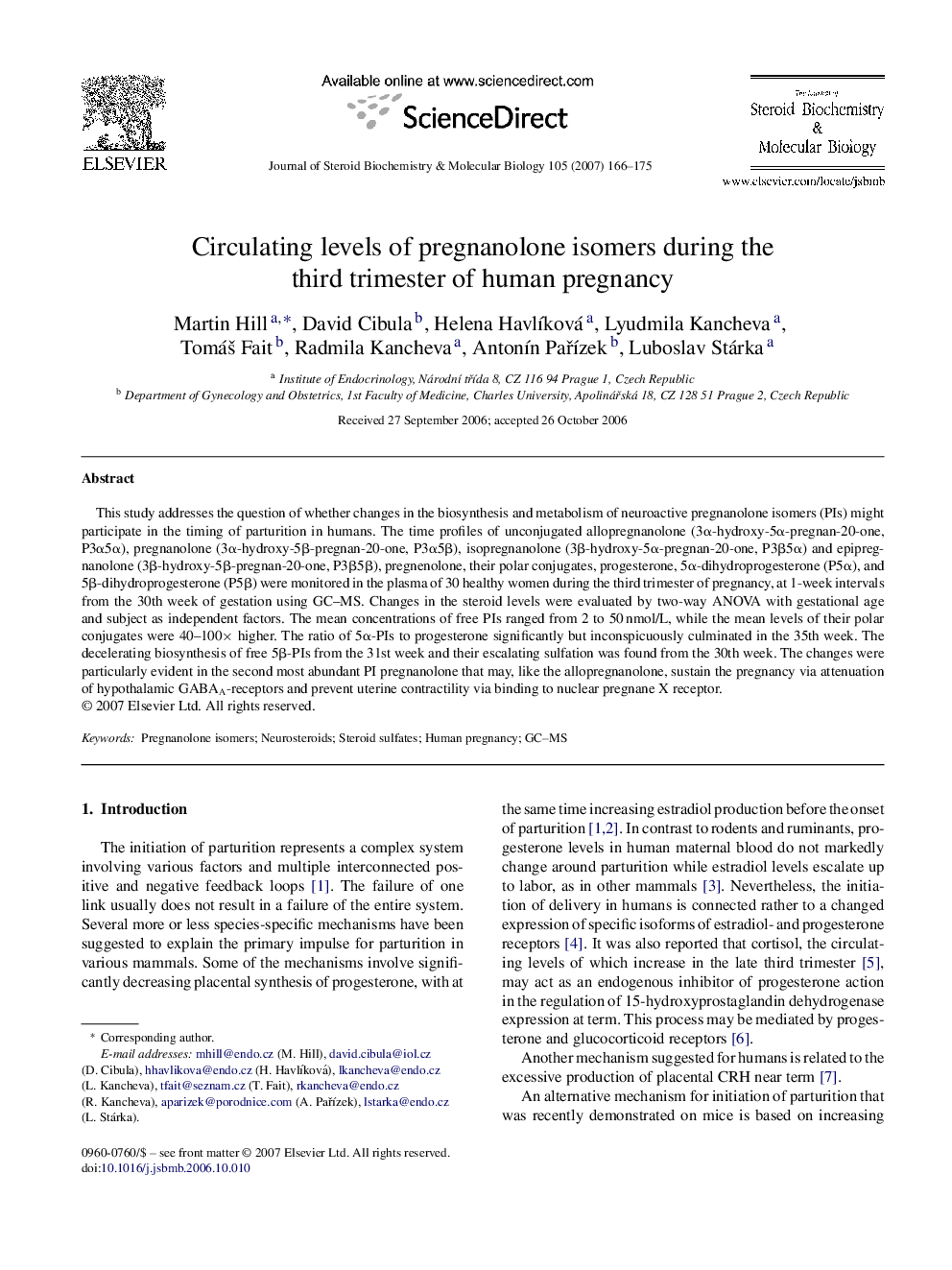| Article ID | Journal | Published Year | Pages | File Type |
|---|---|---|---|---|
| 1992277 | The Journal of Steroid Biochemistry and Molecular Biology | 2007 | 10 Pages |
Abstract
This study addresses the question of whether changes in the biosynthesis and metabolism of neuroactive pregnanolone isomers (PIs) might participate in the timing of parturition in humans. The time profiles of unconjugated allopregnanolone (3α-hydroxy-5α-pregnan-20-one, P3α5α), pregnanolone (3α-hydroxy-5β-pregnan-20-one, P3α5β), isopregnanolone (3β-hydroxy-5α-pregnan-20-one, P3β5α) and epipregnanolone (3β-hydroxy-5β-pregnan-20-one, P3β5β), pregnenolone, their polar conjugates, progesterone, 5α-dihydroprogesterone (P5α), and 5β-dihydroprogesterone (P5β) were monitored in the plasma of 30 healthy women during the third trimester of pregnancy, at 1-week intervals from the 30th week of gestation using GC-MS. Changes in the steroid levels were evaluated by two-way ANOVA with gestational age and subject as independent factors. The mean concentrations of free PIs ranged from 2 to 50 nmol/L, while the mean levels of their polar conjugates were 40-100à higher. The ratio of 5α-PIs to progesterone significantly but inconspicuously culminated in the 35th week. The decelerating biosynthesis of free 5β-PIs from the 31st week and their escalating sulfation was found from the 30th week. The changes were particularly evident in the second most abundant PI pregnanolone that may, like the allopregnanolone, sustain the pregnancy via attenuation of hypothalamic GABAA-receptors and prevent uterine contractility via binding to nuclear pregnane X receptor.
Related Topics
Life Sciences
Biochemistry, Genetics and Molecular Biology
Biochemistry
Authors
Martin Hill, David Cibula, Helena HavlÃková, Lyudmila Kancheva, TomáÅ¡ Fait, Radmila Kancheva, AntonÃn PaÅÃzek, Luboslav Stárka,
